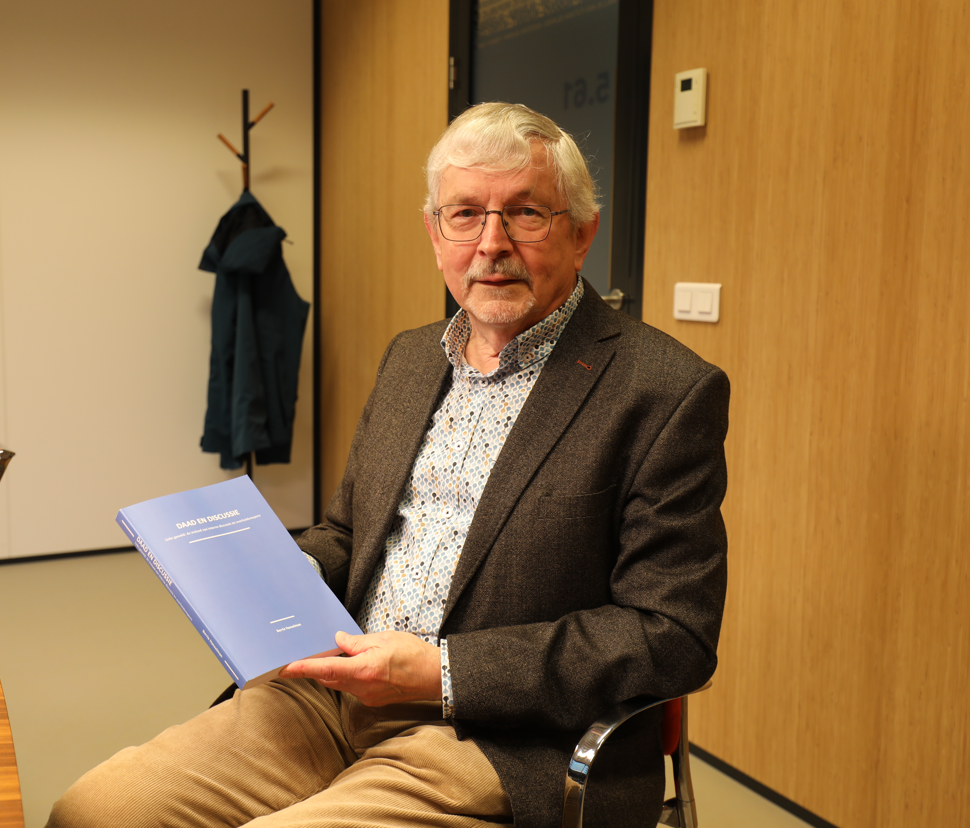
Fifty years of left-wing extremism examined: 'Lenient approach has a positive effect'
After a career spanning decades in intelligence services, Berrie Hanselman could have simply retired, but he chose not to. The Achterhoek native decided to continue and even earn a PhD on his subject: left-wing extremism. Gaining insight into the life of the left-wing activist who does not shy away from violence is no easy task.
There was hardly any insight into the life of extremists. How were you able to conduct the research?
‘Out of fear that information might end up with the police and intelligence services, extremists refuse to speak with researchers and journalists. I personally conducted research into left-wing extremism for the service for many years, so I knew the material existed—a privileged position, you could say. For my research, I chose a specific approach and obtained the material through Freedom of Information requests. The first thing I got my hands on was my own earlier research into the far-left movement in the 1980s and 1990s. The names of the extremists were redacted, but fortunately, I have a good memory.’
What was that earlier research about at the time?
‘The service asked me to write a report—it became an internal publication—on whether we should continue researching left-wing extremism. This was after the relatively calm EU summit in Amsterdam in 1997. About 500 people were arrested, but they were released the next day. I concluded that in the future, issues such as anti-asylum policies, anti-globalisation, anti-fascism, and environmental extremism would become significant. Around the year 2000, you start to see a greater focus on single issues. Before that, the movement was involved in a bit of everything.’
You also researched the violent side of the animal rights movement.
‘Animal rights have nothing to do with a political ideology but are primarily driven by emotion. Achieving animal rights through political means is very difficult, so it has to be done in other ways, such as arson. There are left-wing groups advocating for animal rights, but there was also a far-right group. What was quite amusing is that they would clash on the streets, even though they were there for the same cause. The left considered the right a bunch of fascists and racists, while the left claimed to fight without a political agenda—though, of course, they had an extremely left-wing agenda.’
Did you also attend demonstrations for the service?
‘There were very large demonstrations that you could, in principle, attend, and if you were lucky during such a demonstration, you might overhear something about future plans or signs of radicalisation. You can’t participate in extremist actions, though, because those groups are very small, and everyone knows each other.’
In your research, you write about The Dutch Approach. What does that entail?
‘The Dutch government has always given activists as much space as possible. In Germany, for example, it was handled very differently. The lenient approach generally has a positive effect—let them blow off some steam. If you keep removing people from the streets every time, they might radicalise and end up doing something extreme.’

44 years in intelligence
Berrie Hanselman worked for six years at a division of the MIVD and 38 years with the BVD and AIVD, all by chance: ‘I had just been in military service in Ede for two weeks when they asked who wanted to go to Eibergen. I didn’t know what was there, but Eibergen was only 14 kilometres from my hometown. So I said, “I’ll do it.” Two weeks later, I was at the military intelligence school. After that, I transitioned to the BVD. I could have retired in 2010, at 60, but I continued for another seven years. Work has always been a kind of hobby for me.’
Who were the extremists?
‘In the 1980s and 1990s, there were anti-imperialists, who mainly campaigned in solidarity with oppressed populations in developing countries and focused on anti-apartheid, anti-capitalism, anti-colonialism, and the like. They all fell within that politically motivated group. In addition, there were violent orthodox squatters.’
What about right-wing extremism?
‘I also spent some time researching the right. The actual threat was always relatively limited; you pretty much knew all of them, and they were very open about what they wanted. On the left, however, they know exactly how to stay out of sight.’
Could you elaborate on the conclusion of your research?
‘People often talk about "The Movement" as if it were a large conglomerate of left-wing activists. But that’s not the case, because there was a significant difference between the anti-imperialists and the orthodox squatters. While they are often considered part of the same movement, all originating from the squatting scene, there are significant differences. There was never a coherent movement. The violence was limited to a small group, only a few per cent of activists. This was partly because the vast majority reacted with disgust and disapproval to the violence of groups like RaRa, who carried out bomb attacks.’
What about today?
‘You now have Extinction Rebellion, which initially started as a climate movement—a particularly good initiative. However, you quickly see it being taken over by a very small clique of people who essentially come from the old movement. They no longer focus on climate issues but instead on things like anti-capitalism, anti-colonialism, anarchism, and anti-government sentiments. All those things we used to monitor suddenly reappear. And that’s also my warning for the future: please don’t view an activist movement like Extinction Rebellion as purely a climate movement, but consider the underlying message of those attempting to take over the organisation.’
Text and photos: Magali van Wieren
Promotion
'Left-Wing Violence: The Influence of Internal Debate and Government Response' will be published on 10 January 2025. The dissertation addresses the question of how internal movement debates and government responses have influenced the development, level, and continuity of violence by left-wing activist movements during the period 1965–2015.
Daad en discussie - Links geweld